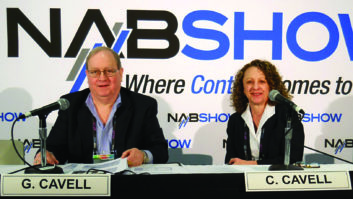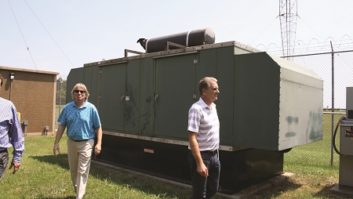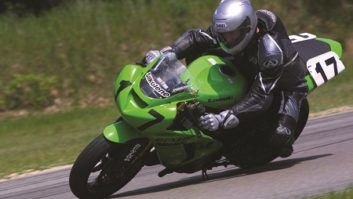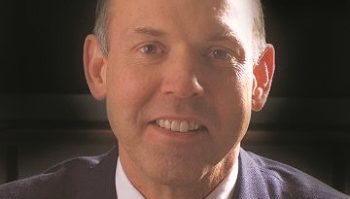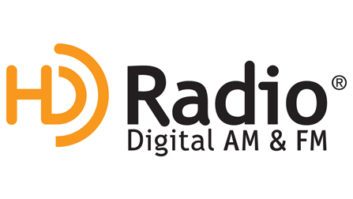Is in-band, on-channel digital audio broadcasting finally going to happen this year after more than a decade of promise and tests?
Several companies with a stake in the outcome hope so. IBOC technology developer Ibiquity Digital Corp. believes the upcoming NAB2002 convention marks an important point of passage for IBOC — the event at which its transmission manufacturing partners begin a hardware rollout.
Three transmission manufacturers, Harris, Broadcast Electronics and Nautel, plan to show IBOC transmitters and exciters at the April show in Las Vegas. Though Ibiquity is working with other transmitter and transmission-related manufacturers to develop equipment, Harris, BE and Nautel are the only transmission companies so far that are licensed to make IBOC gear.
Ibiquity officials prefer to start their rollout with a few select companies and increase the number of manufacturers licensed to make equipment as the rollout progresses.
Will IBOC demand the attention of radio owners and managers in coming months, leading to a sweeping technology change?
Comments to the FCC indicate that radio groups are indeed paying attention, although several sources said the poor economy and ad sales have caused managers to focus on getting money in the door rather than a possible digital conversion.
Booth traffickers
One measure of radio’s belief in IBOC could come from traffic at NAB booths.
“I think what we’ll see is people who are starting to configure their systems now,” said Tim Bealor, vice president of RF Systems for Broadcast Electronics.
“We’ll see people who are starting to figure out which stations to convert. While they may not actually write out a P.O. (purchase order) at this show, they’ll figure out what they need to buy … which is the next step down the road from where we are today.”
Bealor said it’s a big step that Ibiquity has released sufficient technology to the licensed manufacturers to enable them to build the base IBOC gear and get standard products in the field.
“We’re done demonstrating technology. We’re going to start demonstrating products.”
DAB experts said this is what broadcasters want to see — that IBOC is ready. Yet no one knows how quickly or willingly broadcasters will lay their money on the counter for IBOC conversion, with costs ranging generally from $27,000 to $215,000.
Trained ears believe Ibiquity’s FM IBOC system is better than FM analog. In the months since the last NAB radio convention in the fall, the standards-setting National Radio Systems Committee has endorsed Ibiquity’s FM IBOC system.
In a report reviewing tests results, the NRSC urged the FCC to adopt Ibiquity’s FM system as the DAB standard in this country. NAB and several broadcast groups, including both investors in Ibiquity and non-investors, have since filed comments with the commission. Many agreed with the NRSC and NAB and have supported IBOC.
The NRSC was reviewing Ibiquity’s AM system in March and hoped to have a report ready for release at the NAB show.
The FCC has said that once it receives the AM report, it intends to seek public comment quickly, as it did for the FM report.
Ibiquity hopes the commission will endorse its system in some fashion this summer, continue to review public comments about IBOC and then develop rules to allow station conversion.
The company and the FCC are discussing a mechanism for allowing stations to transmit both an analog and digital signal before DAB rules are finalized.
Key early markets
Just as subscription digital satellite radio initially rolled out in key markets, Ibiquity has planned a gradual rollout.
It is targeting six markets to implement the technology by the end of this year: New York, Los Angeles, Chicago, San Francisco, Miami and Seattle, chosen for their large populations and high receiver and other consumer electronics sales.
Ibiquity hopes to put IBOC on enough stations to reach at least half of the radio listeners in the initial markets.
Another unknown is how radio station managers will react to Ibiquity’s plan to charge licensing fees for the technology, based roughly on station class and separate from the cost of new equipment. A fee-based approach is not widely used in radio broadcast technology sales.
Assuming IBOC is a go, with all the years and money spent on its development, will consumers hear the difference? What will spur them to purchase IBOC receivers?
The greatest benefit of digital may be to AM stations, where the promised jump in quality is substantial.
“We broadcast 10 kHz now but no one hears it. Car receivers now hear 3 kHz,” said Hal Widsten, general manager and partner of a standalone AM, KWED, Seguin, Texas, near San Antonio and a member of Ibiquity’s rollout advisory board.
He said in the hybrid mode, the AM analog bandwidth would be 5 kHz and the digital would be 15 kHz.
Widsten said, “Even if it reverts to analog once in a while, I know enough about receivers to know it will sound better.”
Some broadcasters have expressed concern over the narrowed analog bandwidth planned for AM IBOC, down from the allowable 10 kHz to 5 kHz for the analog portion of the signal in the hybrid mode.
When the NRSC endorsed FM IBOC, members stated in their report that there could be some interference to neighboring stations in some situations when facilities begin to convert. They believe the amount would be negligible, while IBOC doubters aren’t so sure.
“We won’t have definitive answers until some stations go digital,” said one vendor. “I think these six markets will tell us a lot about what the future of IBOC will be.”






